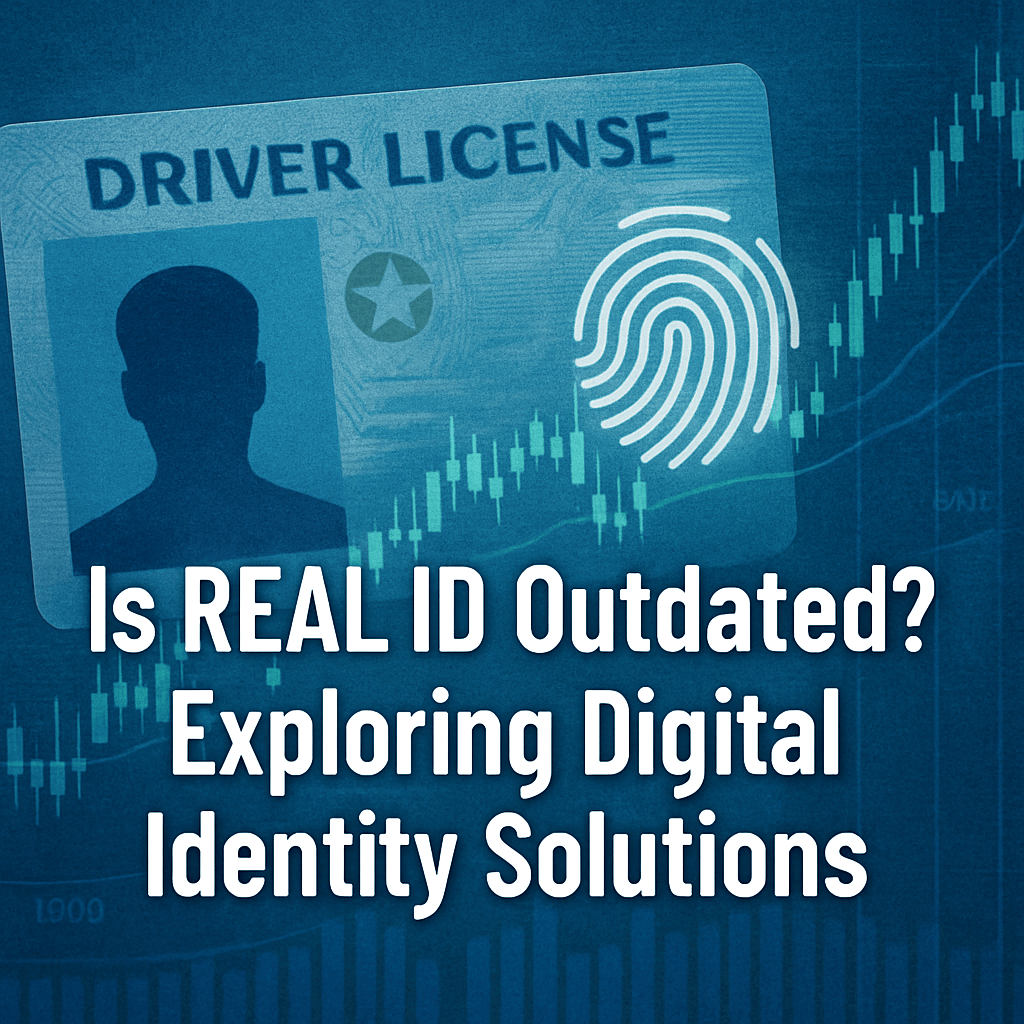Is REAL ID Outdated? Exploring Digital Identity Solutions

We made it through months of wedding planning without ever raising our voices. We negotiated the invitations with laughter and joy. The ceremony and reception went off without a hitch. Now we were newlyweds—for all but one detail: our honeymoon booking. At the airport, we discovered my wife’s passport had expired. What followed was a nerve-wracking dash through express passport services and a $700 expedited fee. Our trip was only delayed one day, but the moment highlighted a broader issue: a single oversight in identity documentation can ground your travel plans.
Starting May 7, 2025, U.S. travelers aged 18 and older will need a REAL ID-compliant document to fly domestically. According to the TSA, about 81% of travelers currently hold a compliant ID—leaving millions facing extra screening or the need to use a passport.
What Is REAL ID?
The REAL ID Act of 2005, enacted in response to the 9/11 Commission recommendations, set new federal standards for state-issued driver’s licenses and ID cards. Key technical requirements include:
- Enhanced physical security features (holograms, optically variable inks)
- Uniform data elements stored in state repositories
- Compliance with NIST SP 800-63-3 guidelines for identity proofing and authentication
By standardizing issuance and vetting processes across all 50 states, REAL ID aims to reduce document fraud at checkpoints.
Limitations of REAL ID
Despite its security enhancements, REAL ID remains a hardware-based solution:
- It does not support remote or online verification workflows
- Issuance and control remain centralized at state motor-vehicle agencies, creating single points of failure
- Additional plastic cards add administrative overhead and supply-chain dependencies
In a digital-first era, carrying another government-issued card feels like patching legacy infrastructure rather than rebuilding trust models for modern needs.
Introducing Self-Sovereign Identity (SSI)
Self-Sovereign Identity shifts control from institutions to individuals. Users store credentials in a secure digital wallet, granting selective access to verifiers without revealing unnecessary personal data.
Core Components of SSI
- Decentralized Identifiers (DIDs): Unique, user-controlled identifiers conforming to the W3C DID specification and anchored on distributed ledgers.
- Verifiable Credentials (VCs): Cryptographically signed attestations—such as university degrees or professional licenses—that can be verified offline or online without re-contacting the issuer.
- Digital Wallets: Applications compliant with ISO/IEC 18013-5 (Mobile Driving License) or FIDO2 standards, safeguarding private keys and enabling zero-knowledge proofs.
Technical Standards and Architecture
- W3C Decentralized Identifiers define DID methods, resolution protocols, and DID Documents.
- W3C Verifiable Credentials standardize credential data models, JSON-LD contexts, and cryptographic suites.
- ISO/IEC 18013-5 governs secure mobile driving license issuance and verification.
- Hyperledger Aries implements interoperable agents, secure messaging, and transport protocols for SSI ecosystems.
Regulatory and Compliance Landscape
The global shift toward digital identities is advancing under various regulatory frameworks:
In 2023, the European Union approved its eIDAS 2 framework and Digital Identity Wallet, enabling cross-border authentication for services ranging from banking to voting.
China’s RealDID initiative integrates decentralized identifiers under government oversight, demonstrating a hybrid model of centralized trust anchors and decentralized user control.
Market Trends and Vendor Ecosystem
Market research firm The Business Research Company forecasts the global digital credential management market to nearly double by 2029, propelled by enterprise pilots and government rollouts. Key participants include Microsoft’s ION, IBM’s blockchain identity solutions, and consortiums such as Sovrin.
- UN World Food Programme’s blockchain ID in Jordan enabled refugee aid disbursement without traditional documents.
- U.S. state Mobile Driver’s License pilots demonstrate offline credential verification via NFC.
- Financial institutions are integrating SSI wallets into KYC/AML workflows to reduce onboarding friction.
Future Outlook
While REAL ID will remain the baseline for U.S. domestic travel, the evolution toward digital-first, user-centric identity systems is inevitable. Self-Sovereign Identity offers:
- Enhanced privacy through selective disclosure and zero-knowledge proofs.
- Cross-border interoperability, with credentials recognized across jurisdictions.
- Resilience, eliminating single points of failure in centralized databases.
For travelers, businesses, and governments, moving from physical cards to cryptographically verifiable digital credentials represents a paradigm shift in trust and convenience.
Regards,
Ian King, Chief Strategist, Banyan Hill Publishing
Editor’s Note: We welcome your feedback. Send comments to dailydisruptor@banyanhill.com. Your identity will remain confidential if published.